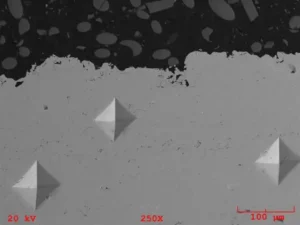Buildup and corrosion can lead to inefficient SDA operation, jeopardizing reliability, increasing lime usage, and creating safety hazards. IGS offers both air cannons and High Velocity Thermal Sprayed (HVTS) Claddings to help you combat SDA inefficiency and maintain the safety and reliability of your equipment.
IGS Air Cannons discharge a blast of compressed air to move deposit material and reduce buildup. Air Cannons can be mounted to the SDA cone, side wall, and/or outlet duct. They eliminate manual rodding and the two potential safety hazards that come with it: potential duct collapse and potential of workers developing shoulder and back problems. Air Cannons increase operational efficiency by enhancing flow throughout the SDA. They reduce pressure drop and under deposit corrosion, while increasing flu gas retention time.
IGS’s HVTS claddings are proprietary modified Hastelloy-based materials applied to the inside of a vessel wall in harsh corrosive environments. This protects workers by eliminating the possibility of the tank collapsing, a situation that has and can occur when corrosion is left unchecked.
IGS Coatings also increase operational efficiency by allowing plants to run a lower approach temperature. Lowering the approach temperature by 5 degrees is shown to reduce raw material consumption by 10-30%. However, if the approach temperature is reduced too much, the resulting increase in corrosion can eliminate cost savings. Therefore, it is necessary to find the optimal amount of coating to be applied, which varies from one SDA to another. At IGS we offer analysis-based solutions customized for our clients’ unique equipment environment and operating objectives.
Air Cannons and HVTS cladding are, first and foremost, safety technologies. They are also performance technologies. They optimize SDA production and save plants millions of dollars in operational and maintenance costs.
